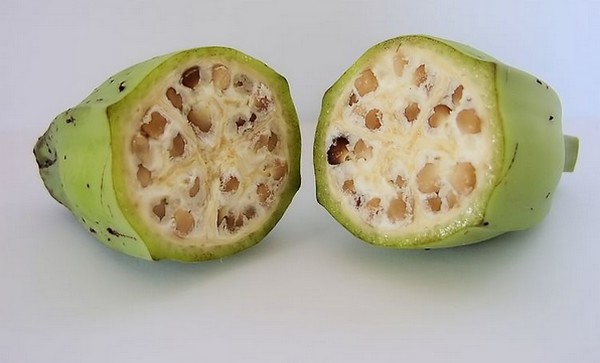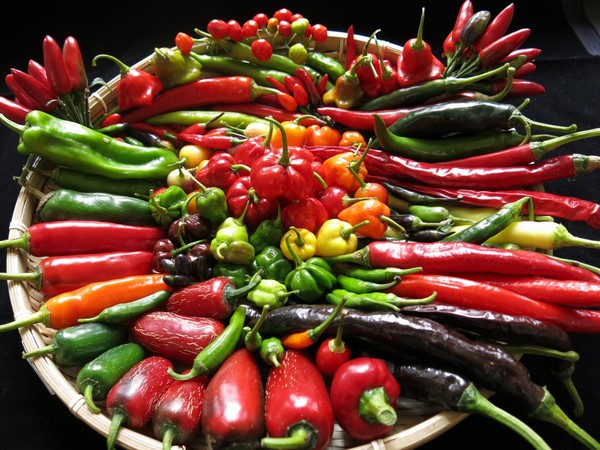Let’s admit it—we really don’t like seeds. That is not universally true, of course. After all, many food items are actually seeds (beans, peas, rice, corn, coffee, cacao) or come from seeds (flour, oil), and we need seeds to propagate many plants. However, when it comes to grapes, watermelon, banana, citrus and some other fruit and vegetables, seeds can be a nuisance. Seeds in many fruits are intermingled with the part we eat, and not confined to the inedible portion like apples, or small like blueberries and strawberries. The crunch of a large seed is not enjoyable and unless it is a contest, it is often socially awkward to spit them out. Therefore, we jump at the chance to get rid of seeds, or at least reduce them to a manageable number.
Seedless plants are not common, but they do exist naturally or can be manipulated by plant breeders without using genetic engineering techniques. No current seedless plants are genetically modified organisms (GMOs). As with many plant systems, several steps must work correctly in the “pathway” for production of the final product (seeds in this case). Compromise in any one step leads to failure. Seedlessness to the plant is useless since it fails to produce offspring, that is why most seedless plants are propagated through grafting or cuttings (cucumber and watermelon being exceptions). However, it is a heritable trait carried on through pollen and maintained in the gene pool until the right parental combination again occurs to produce a plant with seedless fruit. Since these occur naturally, and humans being observant, curious and resourceful creatures, once we find something we like, we take full advantage of it. So, why are some fruit seedless?
Virgin fruit
All seedless fruit fall under a general category called parthenocarpy. Parthenocarpy is a Greek word meaning “virgin fruit.” This is a situation where fruit develops without fertilization of the ovule (the part of the flower that when fertilized develops into a seed). In these plants, pollination may or may not be necessary to trigger hormone production to stimulate the ovary wall to swell and form fruit. However, fertilization and seed development does not occur and there are no “seed traces” or seed remnants. In some cases, fruit development can be stimulated in the absence of pollen through external hormone applications. This seedlessness is present in some varieties of cucumbers, persimmons, grapes, citrus, pineapples and others. This type of seedlessness often produces smaller fruit than their seeded counterparts.
Some plants capable of producing seed may have sterile pollen or other reasons that render them incapable of forming seed, and to produce seed they require pollination by another, genetically different member of that species. When planted in large orchards, they are surrounded by genetically identical copies of themselves, causing them produce parthenocarpic fruit. Many citrus operate this way.
Seed trace
Stenospermocarpy is a type of parthenocarpy where fertilization occurs and the seed begins to develop but eventually aborts, leaving behind a noticeable “seed trace.” Seed traces vary in size depending on how far seed development progressed before abortion and are generally soft enough that they do not have the crunch of fully developed seed. This occurs in most seedless grapes, watermelon and other fruits. Breeders of seedless grapes capitalize off this partial development process by removing developing seeds prior to abortion and growing them into plants using tissue culture techniques. This way, both parents possess the seedless trait thereby producing a higher number of seedless offspring.
Disruption of the seed development process occurs for a number of reasons. Watermelon and banana are seedless because they have three sets of chromosomes, giving them an odd number to work with when they produce pollen and egg cells. Most organisms have an even number of chromosomes, so the resulting egg and pollen cells receive an even number of chromosomes that contain the genetic material, e.g., DNA, to combine to make offspring. When triploids form eggs and pollen, the process produces an odd number, resulting in egg and pollen not receiving an equal chromosome compliment, therefore they lack information needed to be viable. Pollen from triploids often appears shriveled and poorly formed.
Crossing
Triploid organisms occur naturally or they can be developed by crossing a diploid (two sets of chromosomes) with a tetraploid (four sets of chromosomes) to produce a triploid. In the case of watermelon, pollination needs to occur for fruit to develop and since triploid pollen does not germinate, diploid varieties are interplanted to provide viable pollen to induce fruit without complete seed development. The white seed traces are readily visible in watermelon
Stenospermocarpic seedlessness in all grapes studied so far are all due to a naturally occurring harmful “point mutation” in the section on the grape chromosome responsible for seed development. Many use the word mutation or mutant in a negative context, but most changes we find desirable occurred naturally.
An effort was made to develop seedless cherries. However, there is a difference between a “pit” and a seed. A pit is the hard, stony tissue surrounding the seed in olives, cherries, peaches, plums and apricots and is not part of the seed. Researchers were able to develop seedless but not pitless cherries.
Seedlessness may or may not change the character of the fruit. Seed in a fruit can help draw energy and nutrients into the fruit changing characteristics such as nutrient and sugar levels, fruit size, fruit number, time of maturity and others. Breeders and horticulturalists have done a good job using standard breeding and production techniques to overcome these limitations.
For more information:
Michigan State University
www.canr.msu.edu










